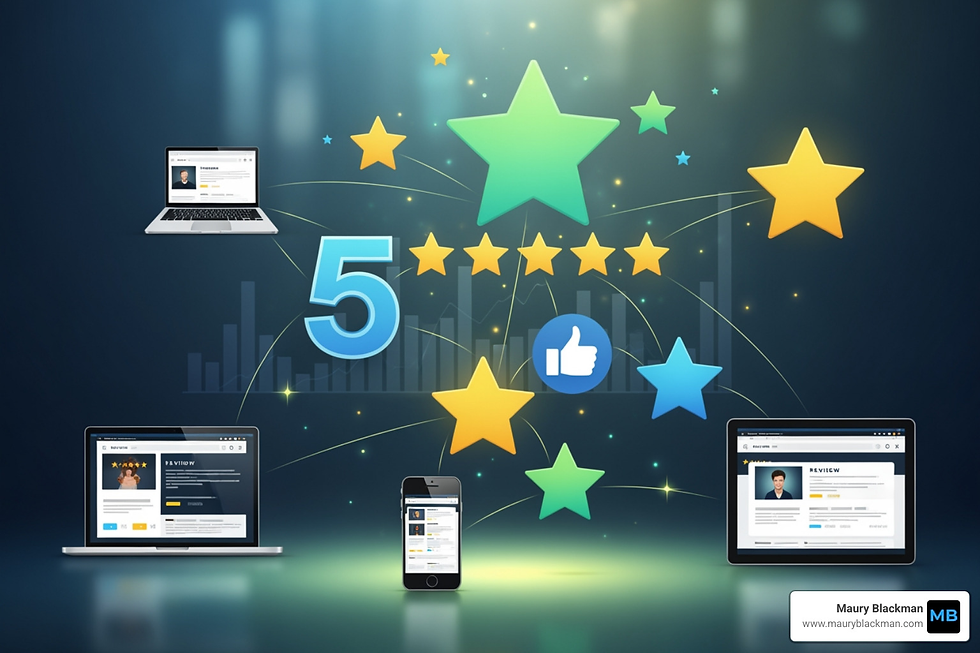Stop Blaming Tariffs. Your Job Got Eaten by AI
- mauryblackman
- Jun 6
- 4 min read
Updated: Jun 13

The May 2025 jobs report dropped last week, and predictably, the headlines lit up like a Wall Street trading floor during a flash crash.
139,000 jobs added.
Unemployment steady at 4.2%.
March and April revised downward by 95,000 jobs.
Within minutes, the takes started rolling in.
“It’s the Fed’s rate hikes finally kicking in…”
“Tariff uncertainty is weighing on manufacturing…”
“Global instability is making companies more cautious…”
All the greatest hits. The pundits were in rare form. CNBC dusted off the macro playbook. Bloomberg pulled in trade economists. You could practically hear everyone on cable news scrambling for their favorite chart showing China’s export surplus or the cost of aluminum.
But once again, everyone’s missing the real story.
Because while they were pointing fingers at geopolitics and fiscal policy, the most consequential force reshaping the labor market wasn’t even on the panel.
That force? AI.
The Real Quiet Quitter Is the Hiring Manager
Let me give you the inside view—because I’ve lived it. I’ve led fast-growing tech companies, built teams, hired strategists, marketers, product experts, data people. I know what it looks like when you need to scale fast, and I know what it feels like when you don’t anymore.
I used to need entire departments to name a product, write a white paper, and get a launch out the door. Today?
One sharp marketer. One ChatGPT window. One brand deck. Done.
Seriously—this isn’t theoretical. I’ve watched one-person teams generate press releases, blog posts, investor one-pagers, and six variations of a product name in an afternoon. Toss in Midjourney or Canva and you’ve got the visuals. Grammarly or Jasper for polish. Copilot to clean up the code behind the website.
That work used to require 5–10 professionals and a few contractors. Now? Just one person and a handful of tools that cost less per year than your average junior copywriter’s salary.
So when the jobs report underperforms and everyone acts shocked—I’m not.
Enter JPMorgan: Not Even Pretending Anymore
JPMorgan, to their credit, isn’t playing coy. Jamie Dimon came out and said it: AI is improving productivity and reducing the need for hiring. Their plan? Cut up to 10% of their operations workforce—not in some distant future, but now.
According to Business Insider, the broader financial sector could shed up to 200,000 jobs in the next few years because of automation and AI. And no, that’s not due to inflation, oil prices, or trade disputes.
It’s because algorithms are better at paper-pushing than people.
This isn’t just cost-cutting—it’s optimization. AI is delivering results at scale. Companies are realizing that for many roles, it’s no longer about hiring more people—it’s about hiring the right people, supported by the right machines.
“The Great Hesitation” Is Tech’s Way of Saying “We’re Not Hiring You”
Over in tech, the Wall Street Journal put a polite label on what’s happening: The Great Hesitation. That’s corporate-speak for: “We’d rather not hire right now because our AI stack is doing just fine.”
New college grads are finding doors shut, internships canceled, and junior roles vaporized—not because there’s no budget, but because there’s no longer a need.
In 2024, new grad hiring in tech fell by 25%.
And no, it’s not the economy. It’s efficiency.
In engineering, product, content, customer success—you name it—AI is already replacing what used to be junior-level labor. Not entirely, but enough to pause hiring and rethink what a team even looks like.
You don’t need a five-person content team when you have one strong strategist and a generative AI playbook. You don’t need three QA testers when your test automation suite runs 24/7 and fixes bugs in real time. You don’t need the PR agency when your internal marketer can write, edit, and distribute in an hour.
AI Isn’t “Coming for Jobs”—It Already Took Them
Let’s be honest: what we’re experiencing isn’t “AI disruption.” It’s AI execution. Quiet. Methodical. Unapologetic.
It’s happening in hiring meetings, not on the factory floor.
And here’s why it’s so insidious: AI doesn’t show up as a pink slip. It shows up as a non-hire. As a headcount that never opens. As a role that quietly disappears from the roadmap.
That’s why the jobs report looks “soft.” Because the jobs don’t even get posted anymore.
Tariffs Are Convenient. AI Is Complicated.
Look, I get why everyone blames tariffs. Tariffs are neat. Blame-worthy. Politically useful. You can campaign on tariffs. You can argue over them on Sunday shows.
But you can’t argue with an algorithm that increased your company’s productivity by 60%.
You can’t legislate your way back into a job that now belongs to an API.
And you sure as hell can’t tariff OpenAI.
That’s the problem. AI is the one variable in the jobs equation we can’t control—so we ignore it, or worse, downplay it. But if we’re serious about understanding the future of work, we need to stop pretending it’s all about trade policy.
It’s not China. It’s Copilot.
It’s not inflation. It’s inference time.
So What Now?
This isn’t doom-and-gloom. I’m bullish on AI. I’ve built companies around it. I believe it will unlock new opportunities we can’t yet imagine.
But let’s not sugarcoat the transition. We are living through a silent restructuring of white-collar work. And the people who don’t see it coming are the ones still pointing at the jobs report and saying, “Hmm… must be tariffs.”
If you’re a company leader, this is the time to rethink org charts.
If you’re a professional, this is the time to upskill and specialize.
If you’re a policymaker, this is the time to start asking hard questions.
Because the future of work isn’t arriving someday. It’s already here.
And it’s not waiting for Congress to catch up.



Comments